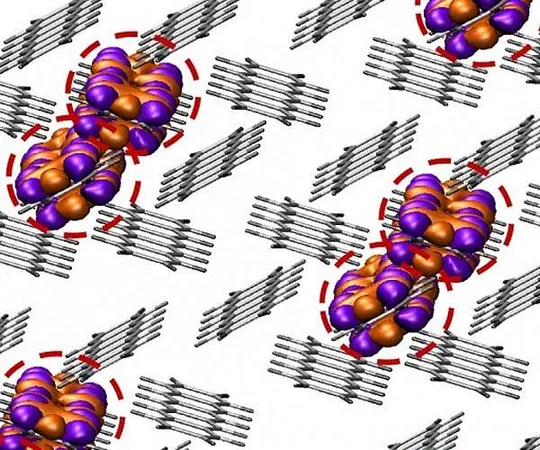
Breakthrough in Energy Production: Enhanced Singlet Fission Efficiency
2024-11-03
Author: Rajesh
Introduction
In a striking advancement that could redefine energy generation technology, researchers at Kyushu University, led by Professor Nobuo Kimizuka, have found a way to significantly enhance the efficiency of singlet fission (SF) in organic materials. This breakthrough could pave the way for innovative applications in solar energy capture and other fields reliant on optical devices.
What is Singlet Fission?
So, what exactly is singlet fission? At its core, it’s a process where a single excitation of energy, known as a singlet exciton, splits into two triplet excitons—effectively doubling the amount of usable energy drawn from light absorption. This transformation occurs through molecules called chromophores, which are specialized in absorbing specific wavelengths of light. The orientation and arrangement of these chromophores are critical to achieving high efficiencies for singlet fission processes.
Historical Context
Historically, most studies on singlet fission have utilized solid samples, leaving a gap in our understanding of how molecular organization influences efficiency. However, the research team made a significant leap forward by introducing chirality into the chromophores' arrangement. Their published findings in the prestigious journal *Advanced Science* highlight the success of using chiral p-electron chromophores in self-assembled nanoparticle structures primarily made of water.
Key Findings
The researchers uncovered that nanoparticles formed from tetracene dicarboxylic acid combined with chiral amines produce triplet excitons at remarkably high yields—recording a triplet quantum yield of an astonishing 133% and a reaction rate constant of 6.99 x 10^9 s^-1. In contrast, traditionally constructed nanoparticles lacking this chiral feature exhibited no singlet fission whatsoever.
Role of Counterion
Delving deeper, the team observed that a crucial counterion—specifically, an ammonium molecule—played a decisive role in enhancing the structural arrangement and alignment of chromophores. By influencing the intermolecular coupling strength, these ions help establish a regular configuration that positively impacts the singlet fission process.
Implications for Energy Science
This research is not just a step forward in theoretical physics; it represents a potential leap toward more efficient solar cells and sustainable energy systems. Professor Kimizuka emphasized that this new model for designing organic molecules could significantly impact future studies in areas such as energy science, quantum material applications, and photocatalysis—fields that are vital as society leans more towards renewable energy sources.
Conclusion
In summary, the introduction of chirality into molecular structures reveals promising avenues for enhancing singlet fission, allowing researchers to explore new realms in energy production and electronic application. This innovation could lead to cutting-edge technologies that harness energy more effectively and sustainably than ever before. The future looks brighter with these advancements, not just for energy scientists but for anyone interested in the future of energy and technology!


 Brasil (PT)
Brasil (PT)
 Canada (EN)
Canada (EN)
 Chile (ES)
Chile (ES)
 España (ES)
España (ES)
 France (FR)
France (FR)
 Hong Kong (EN)
Hong Kong (EN)
 Italia (IT)
Italia (IT)
 日本 (JA)
日本 (JA)
 Magyarország (HU)
Magyarország (HU)
 Norge (NO)
Norge (NO)
 Polska (PL)
Polska (PL)
 Schweiz (DE)
Schweiz (DE)
 Singapore (EN)
Singapore (EN)
 Sverige (SV)
Sverige (SV)
 Suomi (FI)
Suomi (FI)
 Türkiye (TR)
Türkiye (TR)